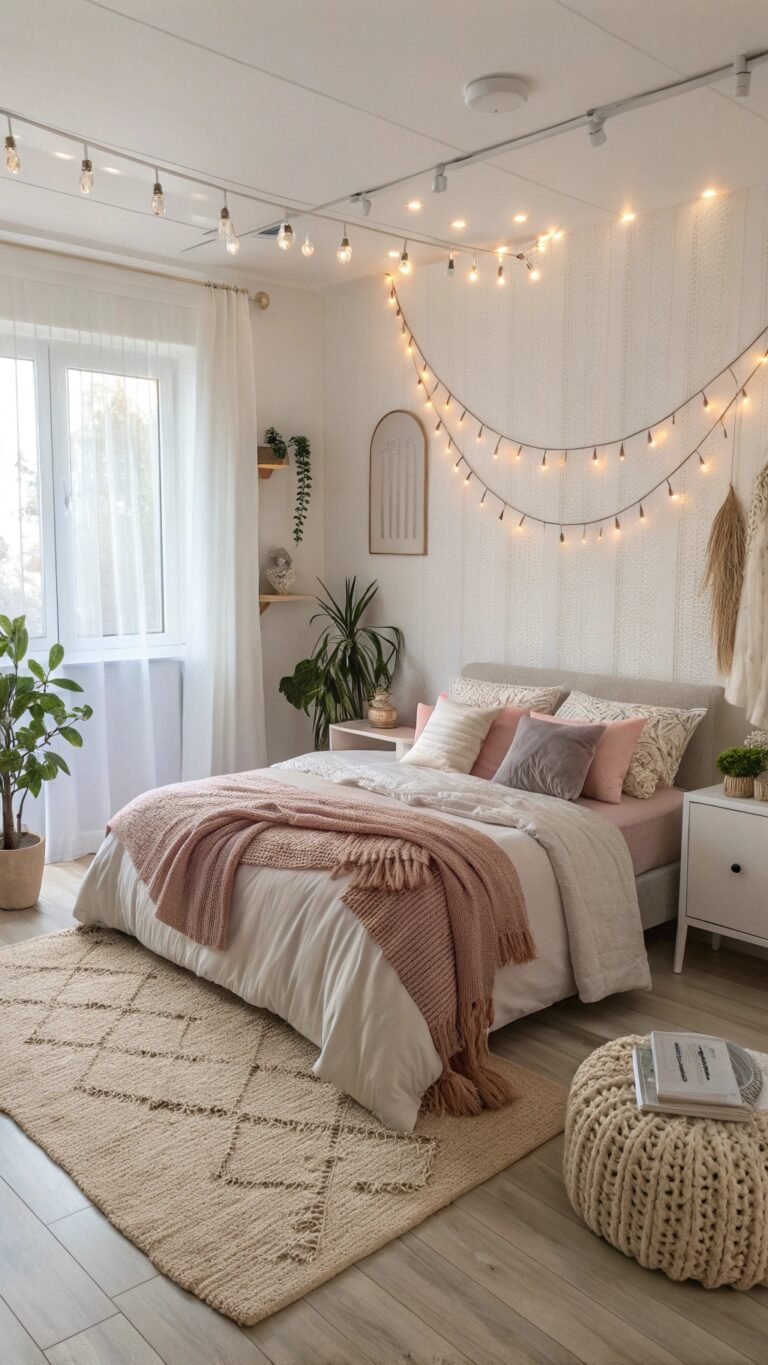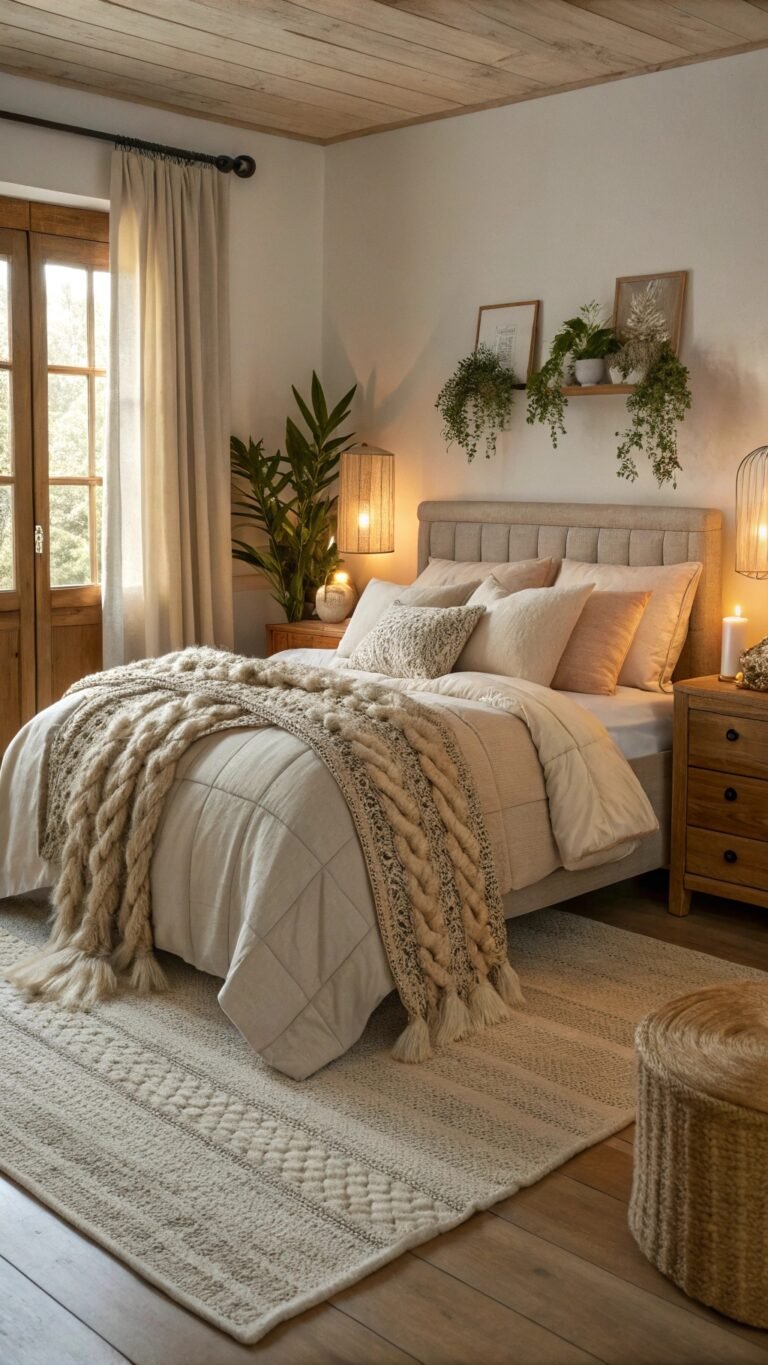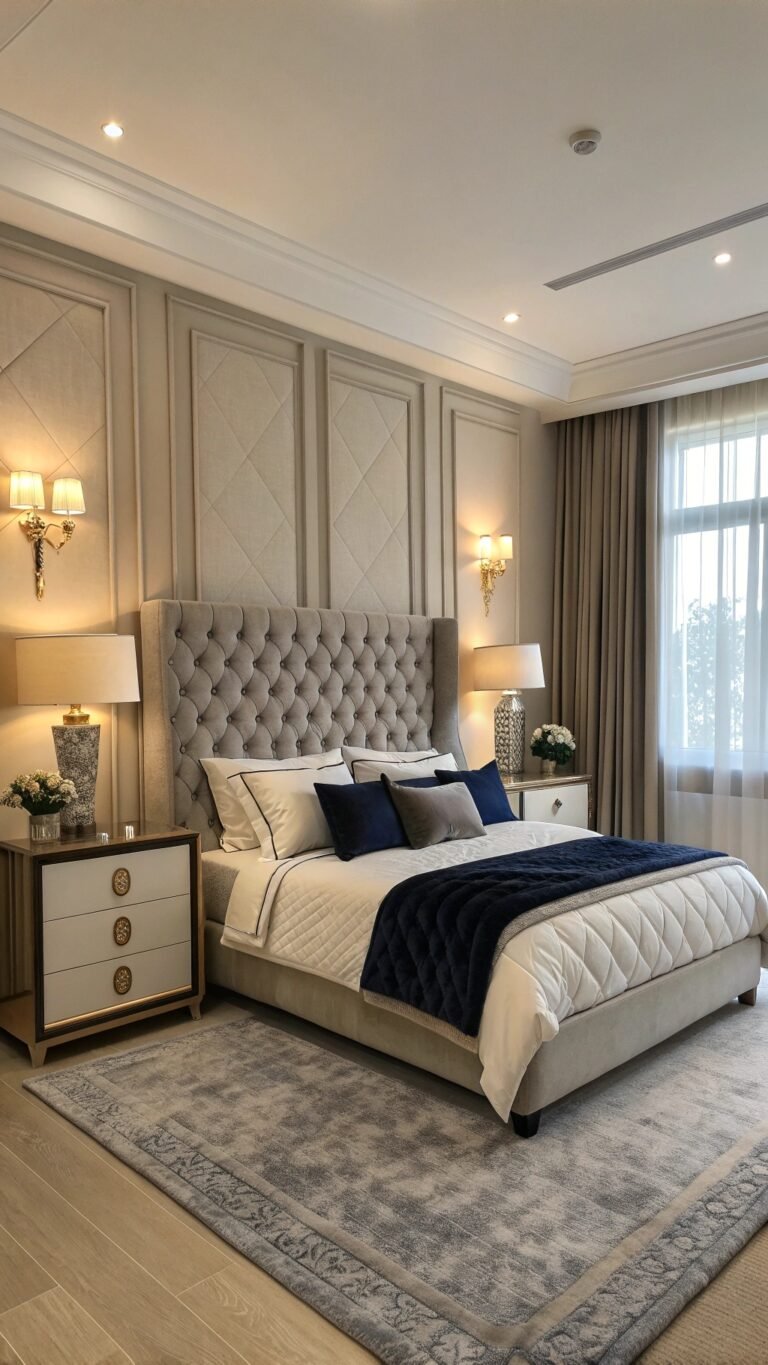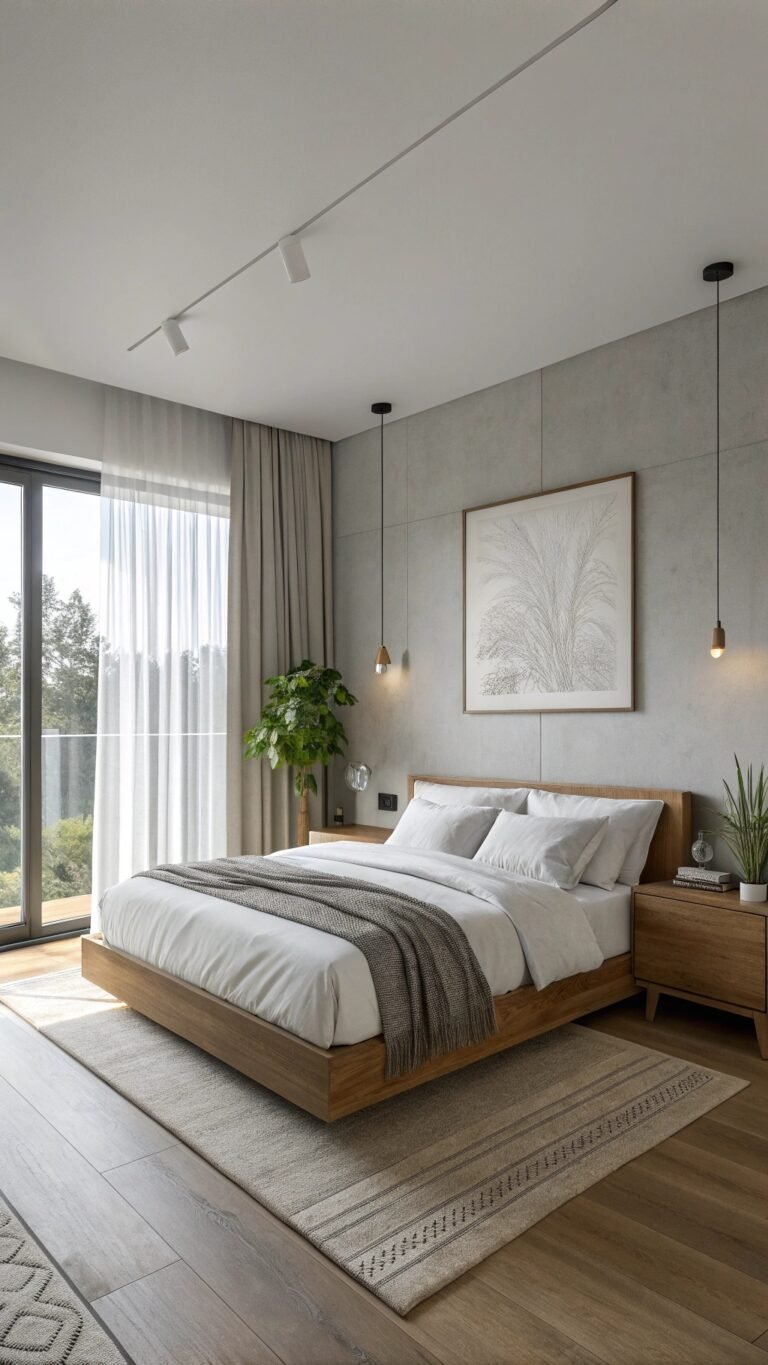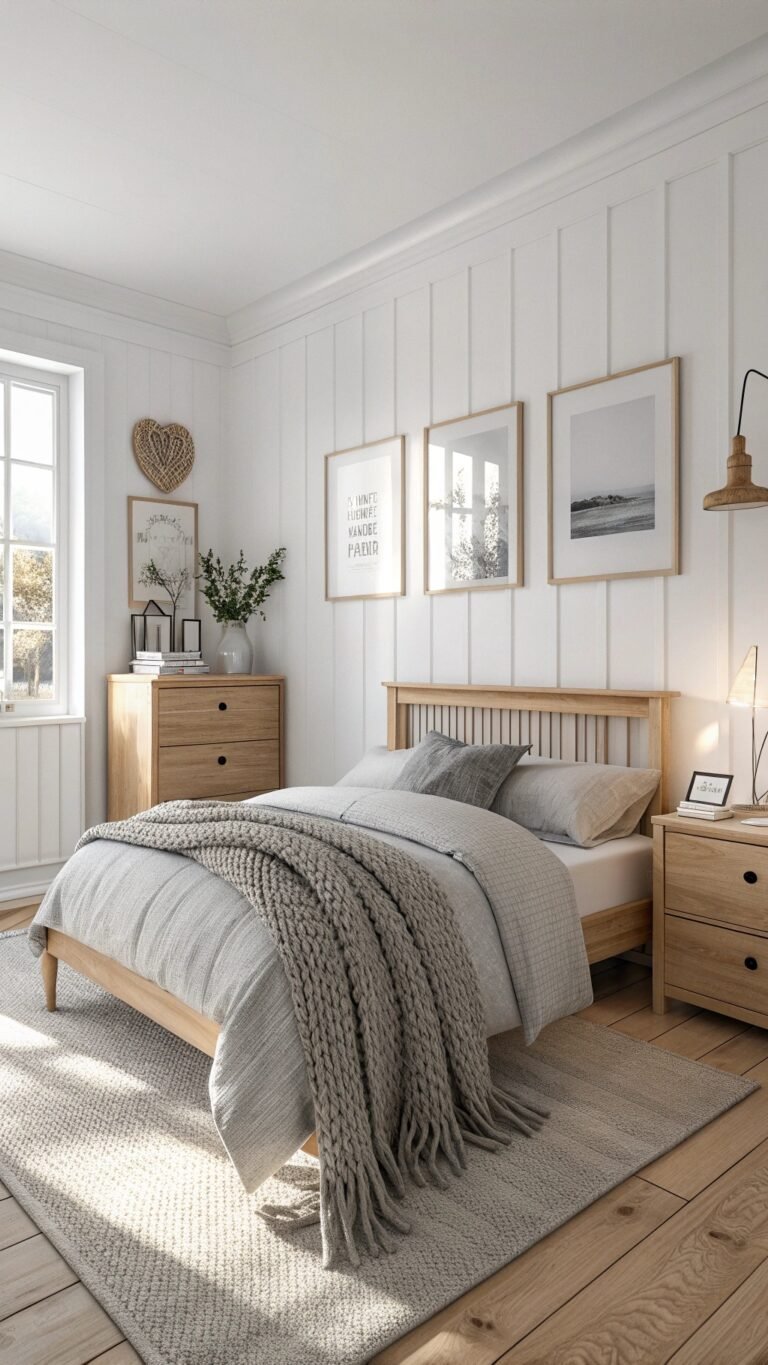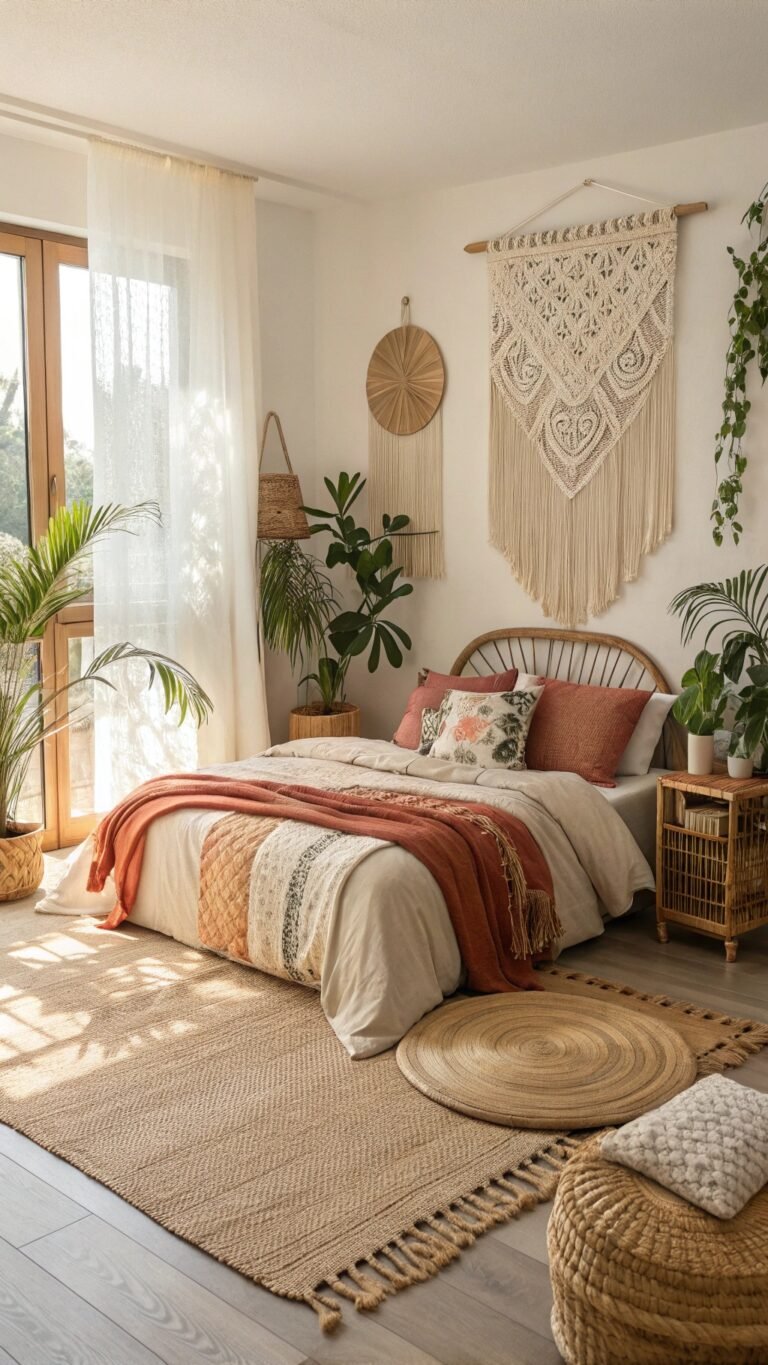Bedroom Ideas for Small Rooms: 15 Space-Savvy Looks with Big Style
Bedroom ideas for small rooms are trending because thoughtful tweaks—vertical storage, smarter lighting, and scaled furniture—deliver renovation-level impact without knocking down walls.
Designers are leaning into light palettes, multifunction pieces, and sleek lines that make tight footprints feel calm and capable. Try one headline move, back it up with two easy tweaks, and your small room will live larger.
1) Vertical First Design
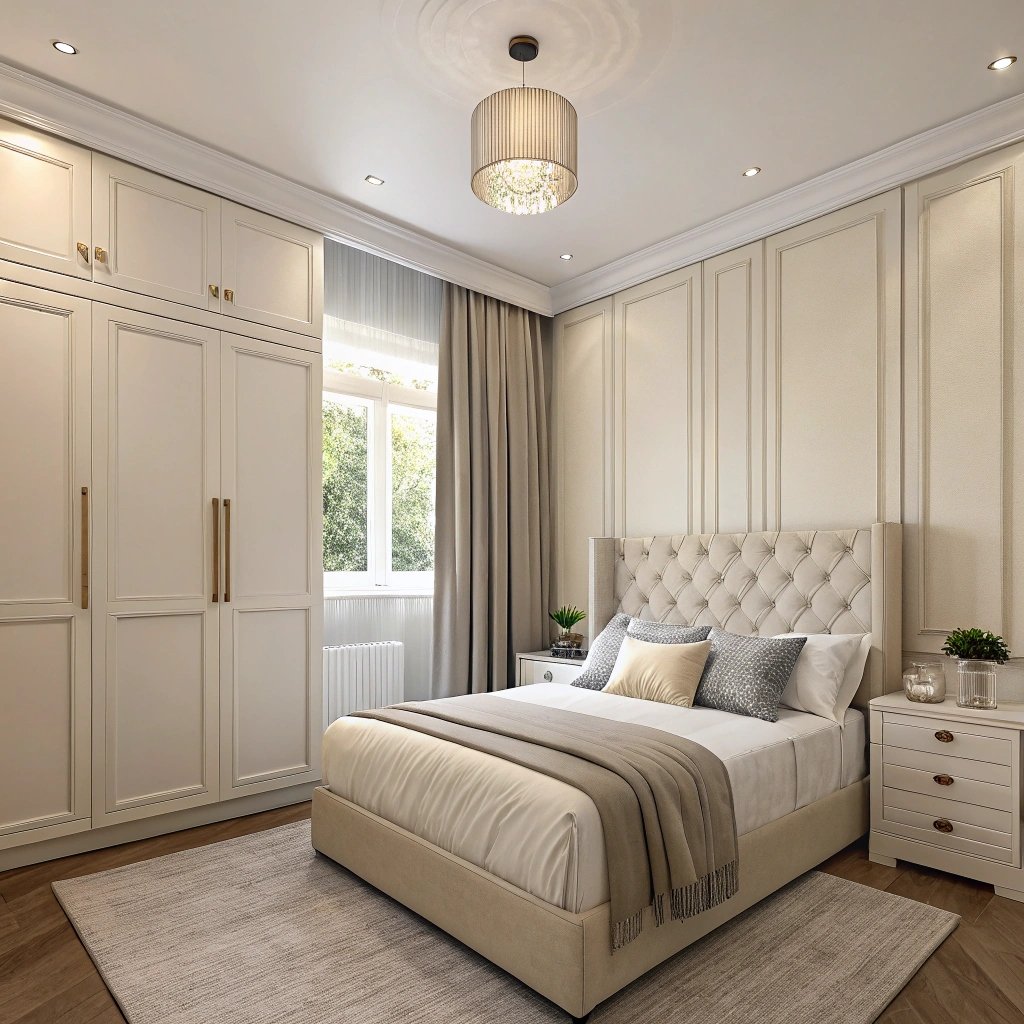
Use the room’s height to win back floor space. A tall headboard, high-mounted curtain rod, and floor-to-ceiling wardrobes draw the eye upward and visually stretch the walls.
Choose a bed with a slim frame and keep side tables petite. Store off-season items up high in labeled bins so everyday essentials remain at arm’s reach.
What makes something unique:
Unify vertical elements with a single color family—oat, bone, ivory—so the eye reads one continuous column.
Add a narrow picture rail above the headboard for layered art that never crowds the nightstand.
This approach makes ceilings feel taller, keeps surfaces tidy, and creates a “towering calm” that suits both modern and classic decor.
2) Floating Pieces, Freer Floor
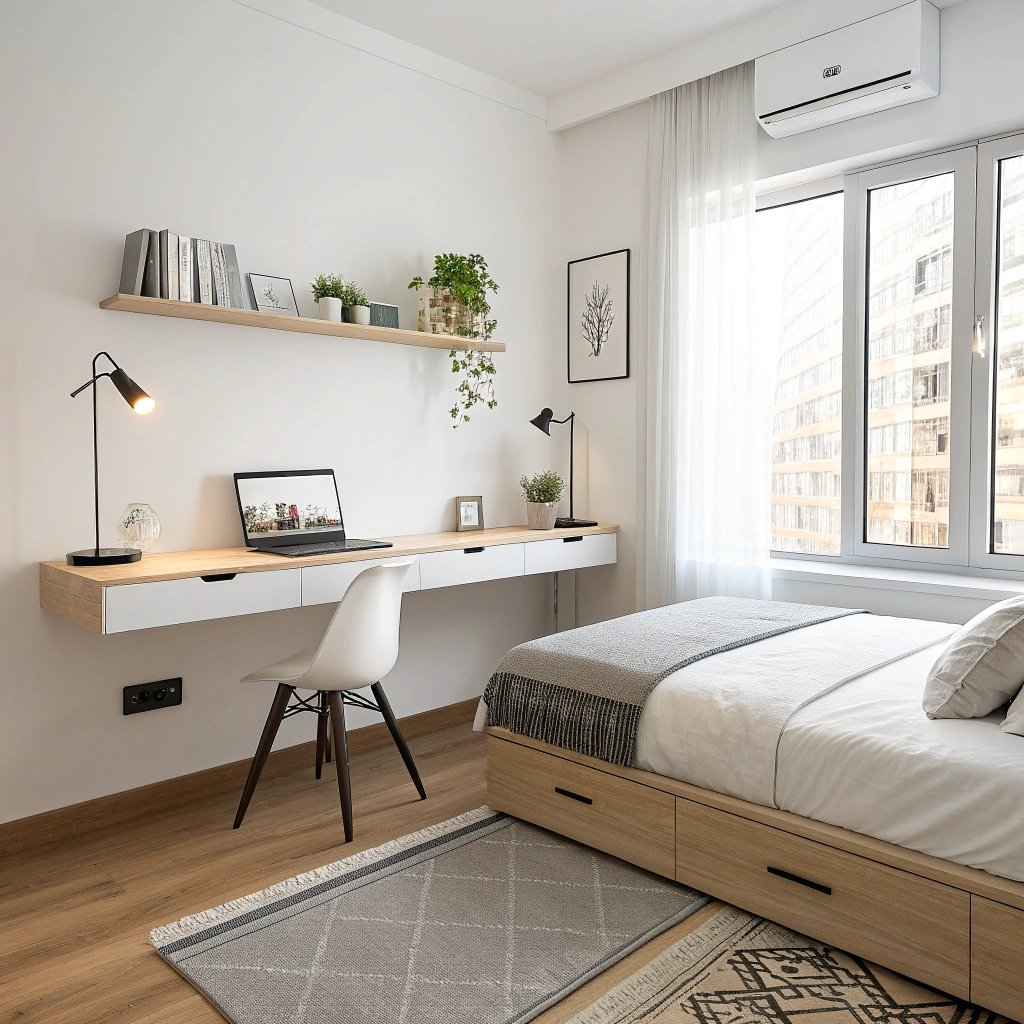
Free the floor to gain breathing room. Wall-mounted nightstands, a floating desk ledge, and plug-in sconces eliminate bulky legs and lamp bases.
Run the rug slightly under the bed to anchor the layout while letting most of the flooring remain visible—an optical trick that reads “bigger” at a glance.
What makes something unique:
Route a cord channel behind the headboard so sconces and chargers disappear. Use a single shelf that stretches wall-to-wall as both desk and vanity, paired with a tuck-away stool.
The negative space under floating pieces becomes visual square footage, making cleaning easier and the room feel airy even when fully furnished.
3) Underbed Storage That Works
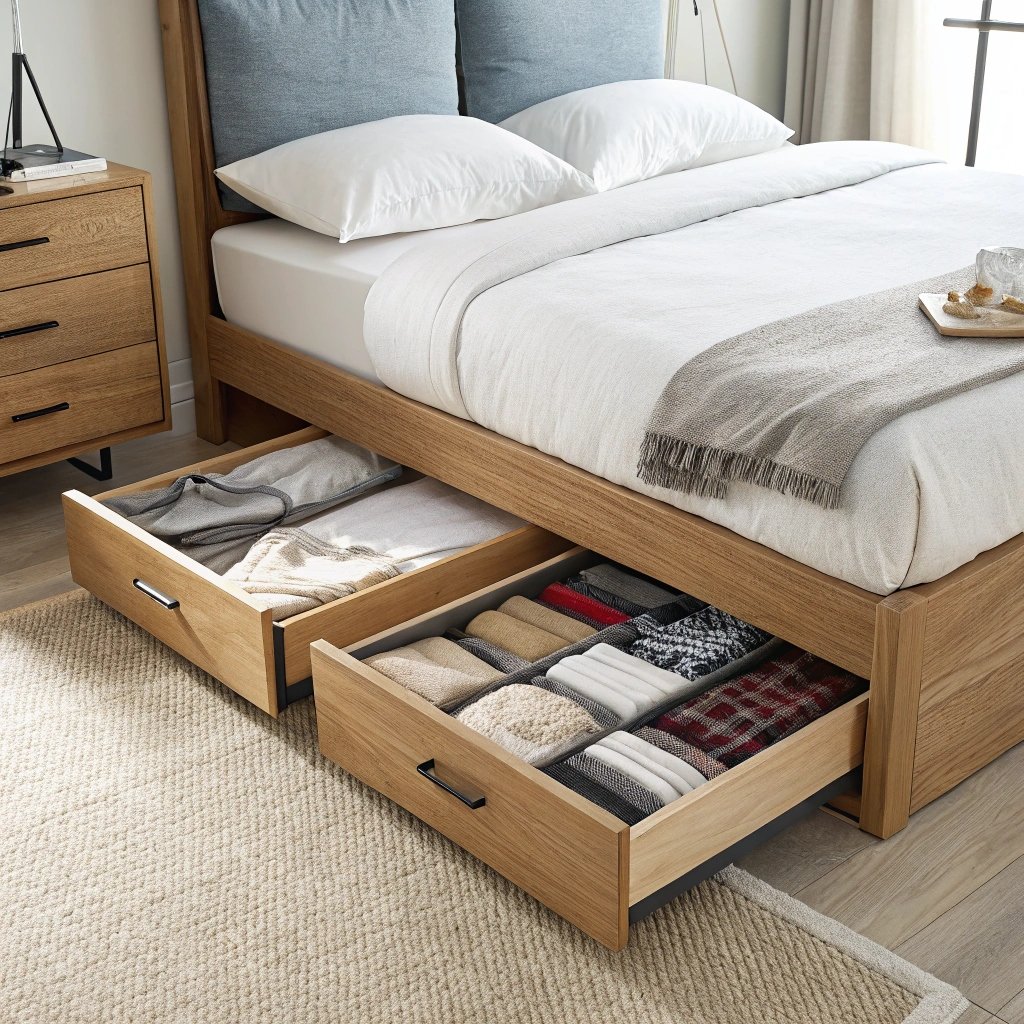
Choose a platform bed with deep drawers or lift-up storage for linens, sweaters, and spare pillows. Use fabric dividers to keep categories contained so drawers glide smoothly and nothing becomes a jumble.
Keep the bed skirt-free; a clean plinth base looks modern and prevents dust bunnies from forming colonies.
What makes something unique:
Map the drawer layout to your weekly routines—left side for gym and PJs, right for bedding and guest linens—so you’re not rummaging.
Add subtle finger pulls and full-extension slides to access every inch. Treat the bed as a silent dresser that replaces a bulky chest, freeing wall space for art or a slimmer wardrobe.
4) Light Layers, Not Heavy Patterns
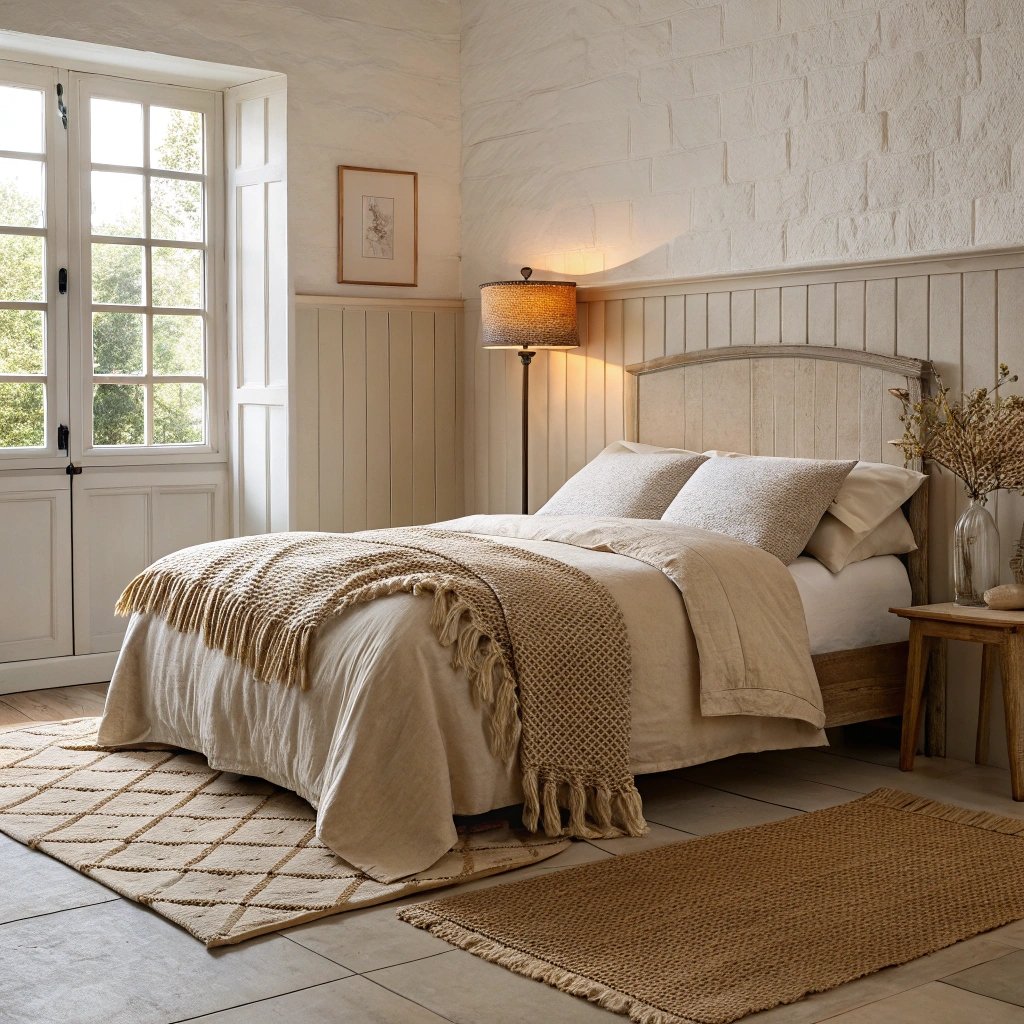
Keep the palette tight—soft whites, beiges, pale grays—and let texture create interest. Linen bedding, a nubby throw, ribbed ceramics, and a wool or jute rug add depth without visual noise.
Limit patterns to one subtle motif, like a pinstripe lumbar pillow, to keep the eye calm and the room expansive.
What makes something unique:
Introduce a limewash or microcement headboard wall for gentle movement that photographs beautifully and hides minor scuffs.
Swap shiny metals for low-sheen brass or matte black to avoid glare. The result feels airy and elevated, inviting rest while doubling as an Instagram-ready backdrop that won’t date quickly.
5) Color Block Headboard Wall
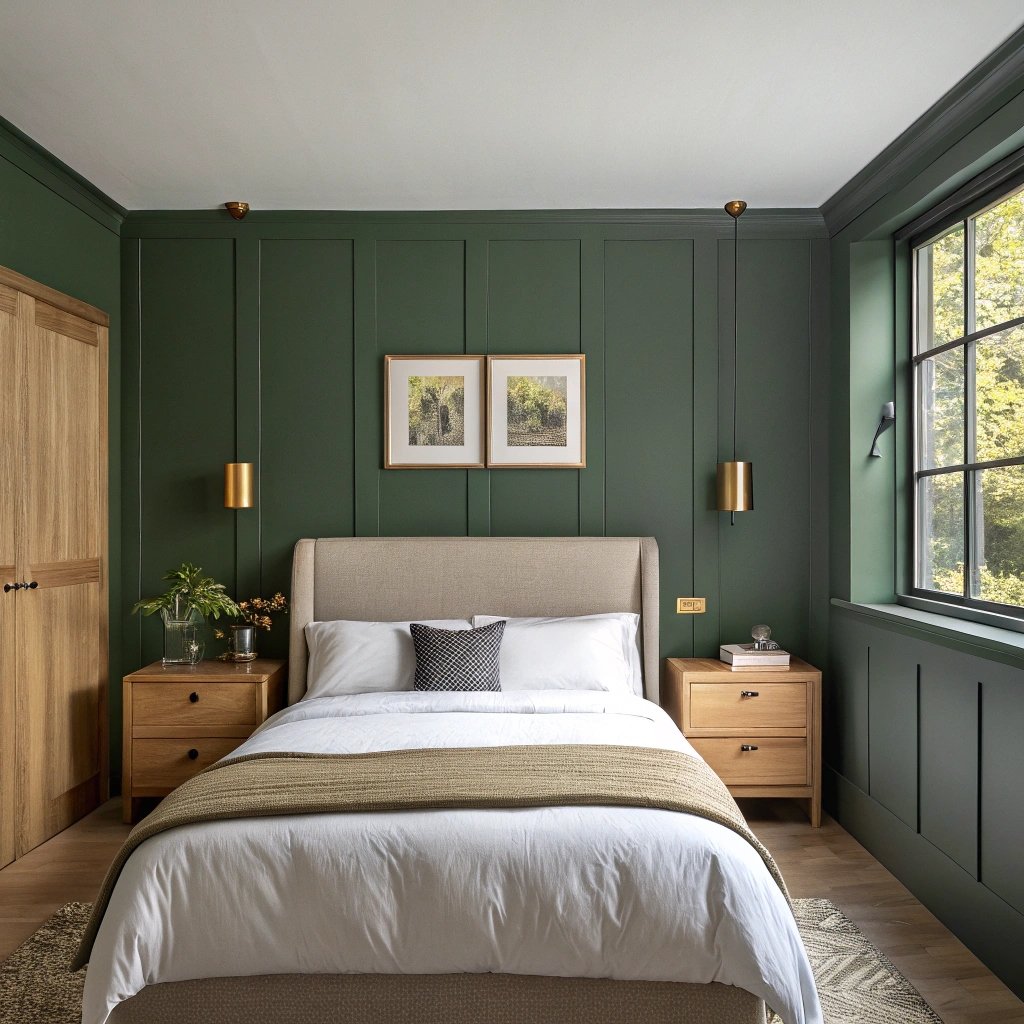
Anchor the bed with a single saturated hue—deep teal, olive, or oxblood—on the headboard wall, keeping the other walls pale.
The color frames the bed and reduces the need for heavy art arrangements. Balance with warm woods and off-white linens so the strong tone feels considered, not claustrophobic.
What makes something unique:
Play with sheen for sophistication: matte wall paint, satin-lacquer nightstands, and a slightly glossier, color-matched picture frame.
Repeat the hue once more—a throw or lamp base—for cohesion. The controlled splash of color hides outlets and cords visually while creating a boutique-hotel focal point in a footprint that can’t afford extra furniture.
6) Mirror Magic with Discipline
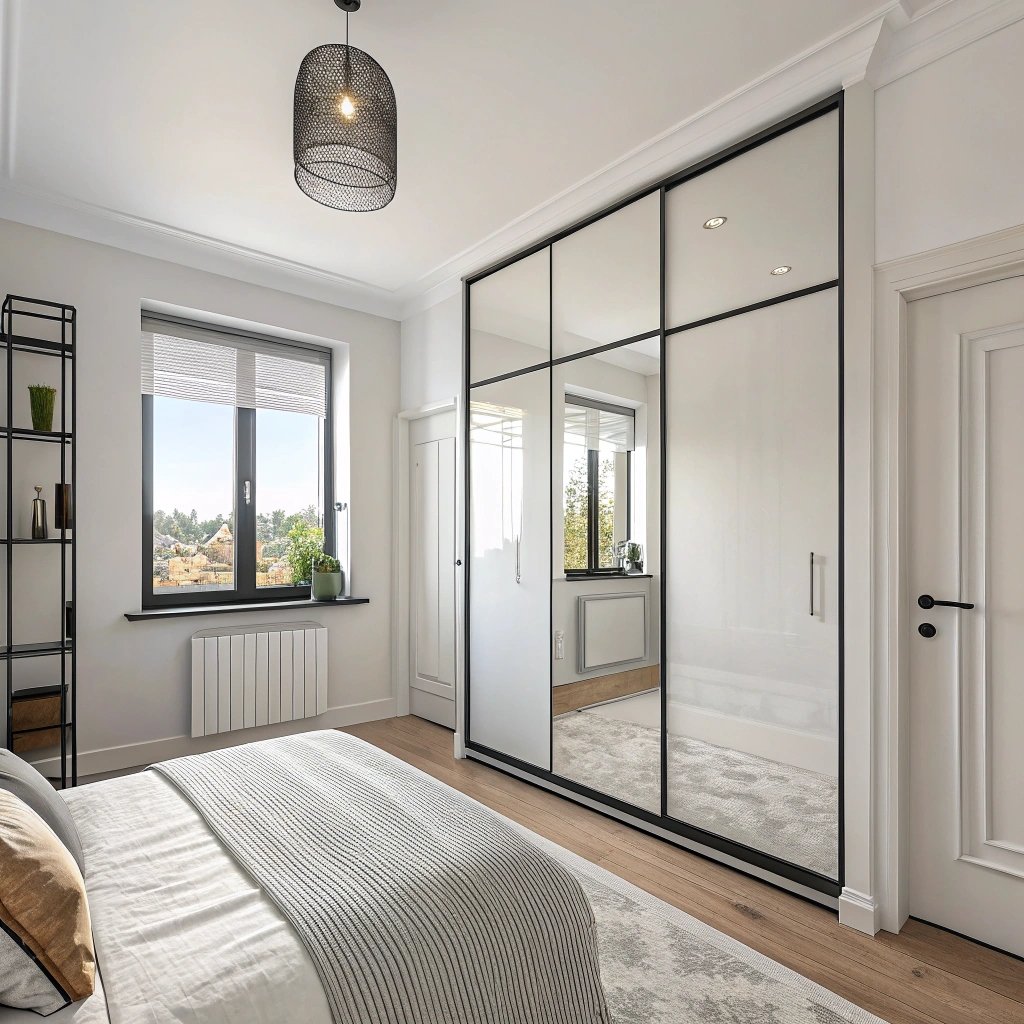
Use mirrors to bounce light and widen the view, but place them strategically. A tall mirror opposite the window doubles perceived width; mirrored wardrobe doors lighten a wall of storage.
Keep frames thin and shapes simple so the reflection does the work rather than the trim.
What makes something unique:
Angle a narrow mirror to catch a sliver of sky or greenery, not the cluttered side of the room. Pair with ribbed or reeded glass on cabinet fronts to blur contents while still reflecting glow.
This disciplined approach delivers brightness without a funhouse effect, making the space feel composed and thoughtfully enlarged.
7) Built-In Look on a Budget
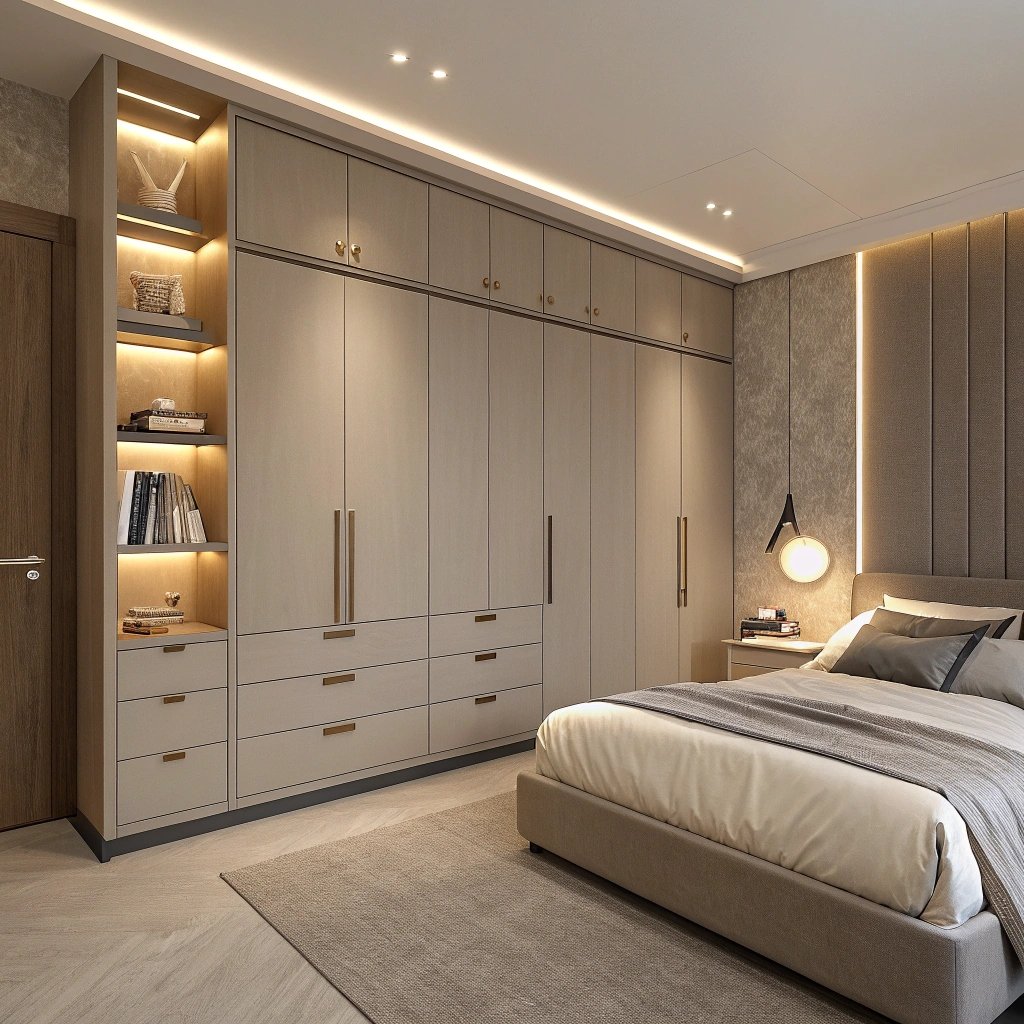
Create a “wall of calm” with modular wardrobes and bridge cabinets installed floor-to-ceiling, color-matched to the walls.
Add integrated pulls and thin crown or side panels for a truly built-in feel. Inside, use double-hang rails, shallow drawers, and pull-out trays for accessories so the dresser becomes optional.
What makes something unique:
Install toe-kick LEDs for night navigation and an inset ledge over the headboard for books and a tiny plant.
The seamless facade removes visual interruptions, making a small bedroom feel like a tailored suite. You gain storage, lose dust traps, and keep a serene canvas for any bedding style.
8) Window Wall Bench with Drawers
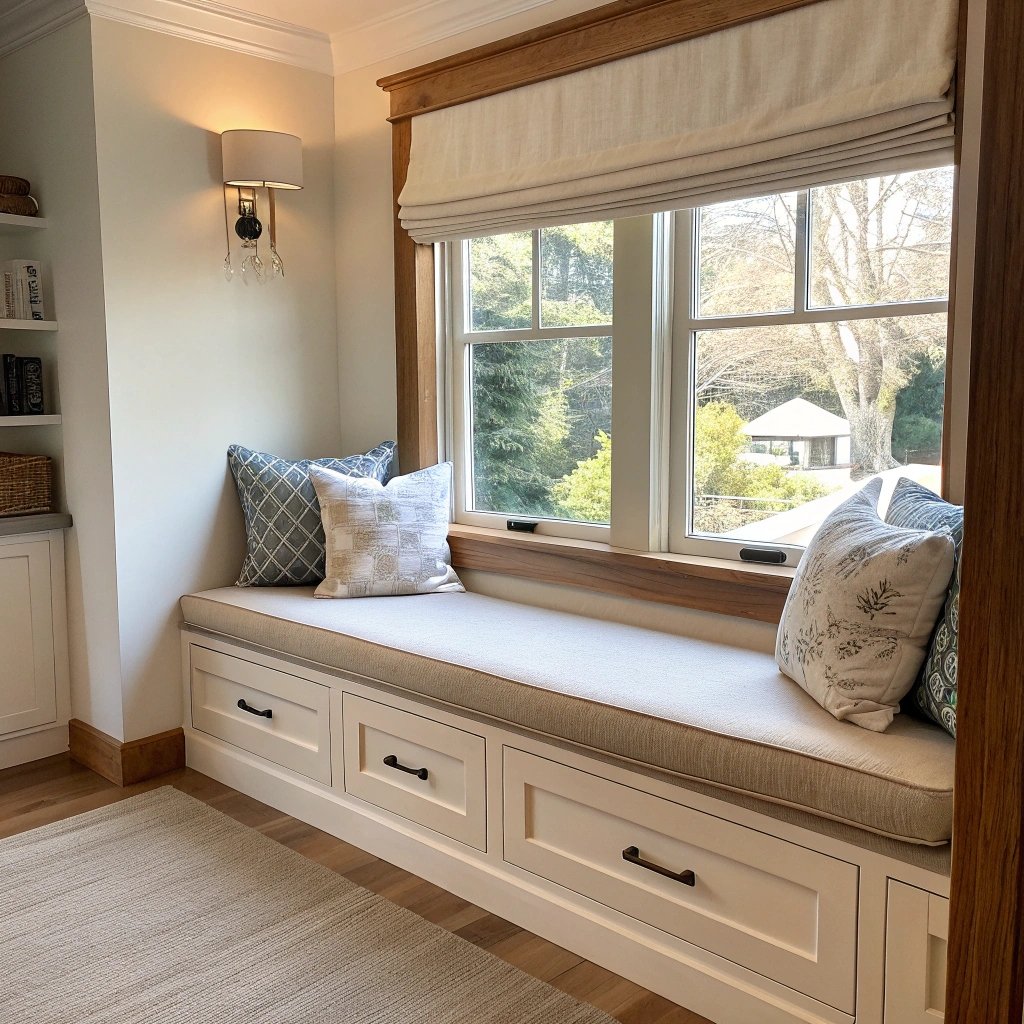
Turn the window zone into a multitasker. A shallow bench with built-in drawers becomes seating, suitcase perch, and linen storage.
Add a cushion and two pillows to invite reading without adding a separate chair that steals circulation space. Use a Roman shade to keep sightlines tidy.
What makes something unique:
Wrap the bench in the same finish as your wardrobes for continuity, and add a small USB-C outlet inside the seat front for discreet charging.
The piece stabilizes the layout, frames the view, and corrals the everyday mess that usually lives at the end of the bed—all within a sliver of floor area.
9) Wall Lamps Over Tables
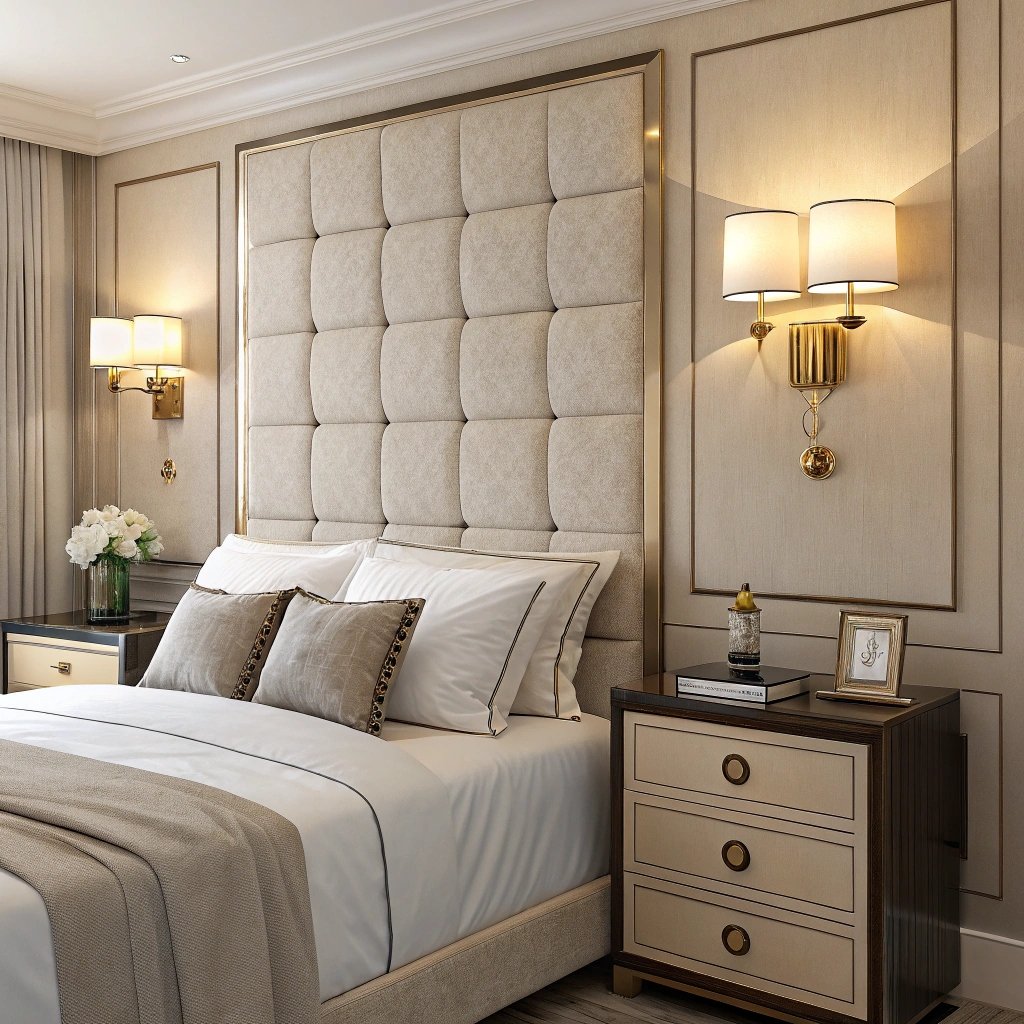
Swap bulky bedside lamps for wall-mounted sconces at eye level to free tabletops for water, books, and glasses.
Swing-arm or plug-in models avoid hardwiring and keep the budget friendly. Choose shades that shield glare for reading while casting a warm pool of light that flatters textiles.
What makes something unique:
Mount the sconces on a slim upholstered panel or wood strip to hide cables and add a custom feel. Pair with small, tray-top nightstands sized to the mattress height.
The combination keeps everything reachable without crowding and makes even narrow rooms feel thoughtfully composed and easy to reset each morning.
10) Pocket or Sliding Doors
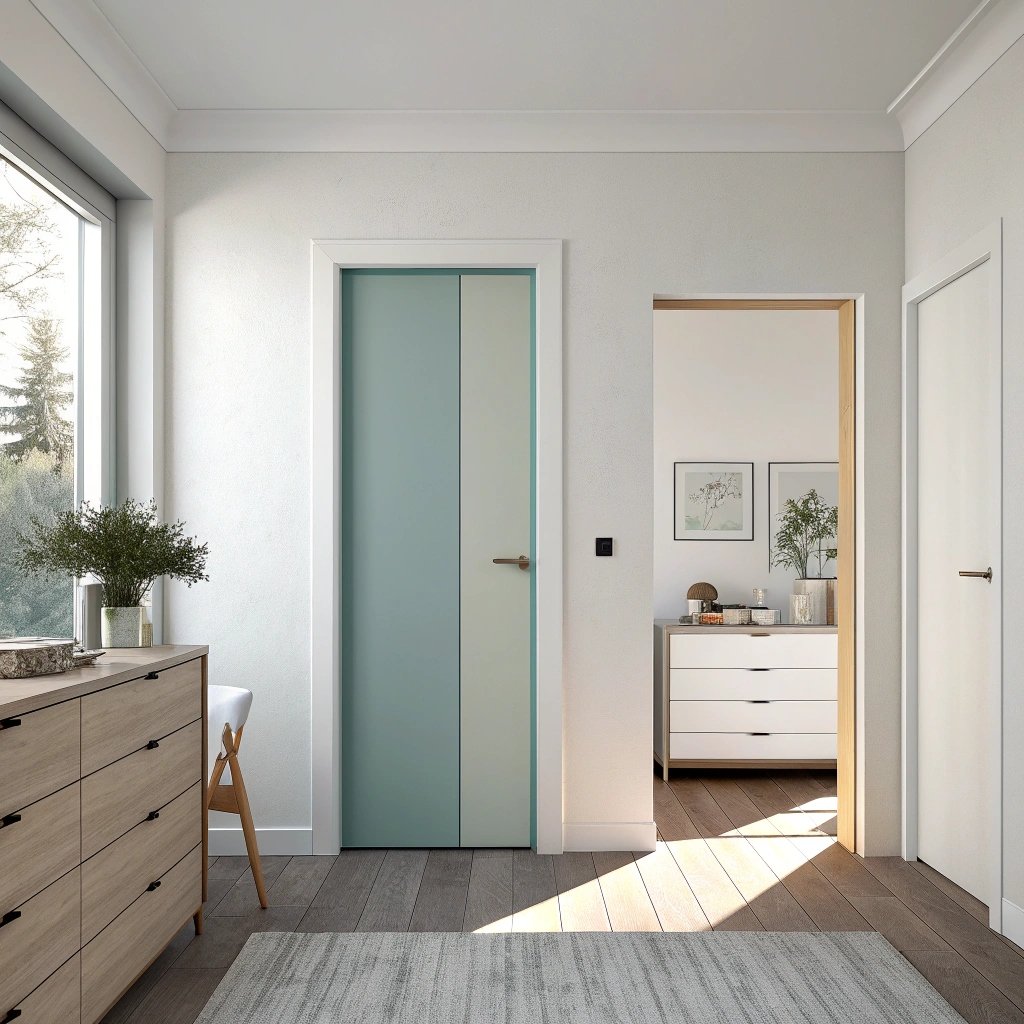
Replace swing doors with sliders or pocket doors to reclaim clearance for a dresser or wider nightstands.
Choose solid-core for sound control and paint them to match the walls for a seamless plane. If pockets aren’t possible, barn-style tracks with slim hardware still save precious inches.
What makes something unique:
Use flush pulls and a shallow shadow reveal around the opening to add depth without trim. A soft-close mechanism prevents rattles in small spaces.
The upgrade unlocks furniture layouts that were previously impossible, improving both storage capacity and the way you move around the room.
11) Murphy Bed or Daybed Switch
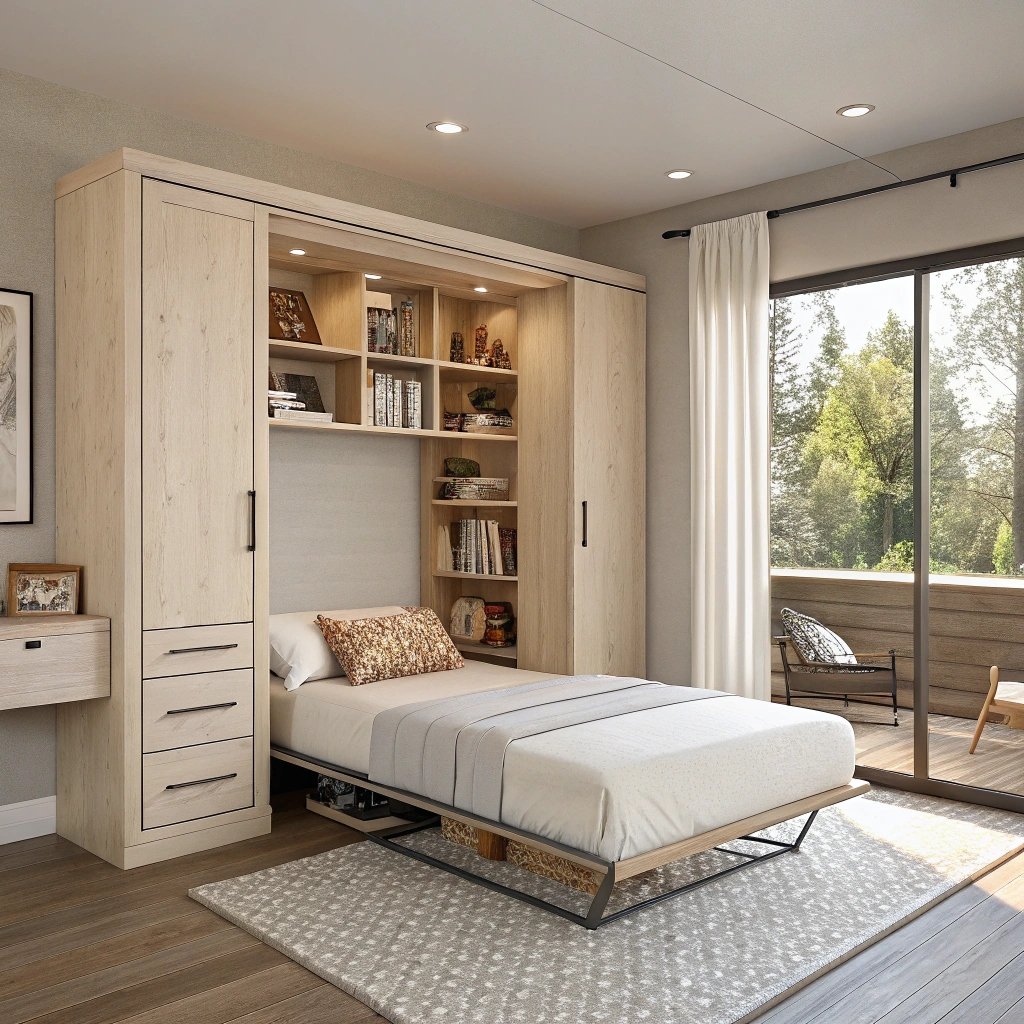
In micro rooms or studios, convert the bed itself. A vertical Murphy bed frees floor space by day for yoga or work, while a daybed with bolsters acts like a sofa without needing extra seating.
Choose supportive mattresses and quality hardware so comfort doesn’t suffer for flexibility.
What makes something unique:
Build a shallow shelf or peg rail behind the Murphy bed that reads like a styled wall when the bed is up and becomes a headboard niche when down.
For a daybed, size a round table that tucks under the frame to pull out at night as a bedside surface. One footprint, two dependable lives.
12) Corner Desk/Vanity Combo
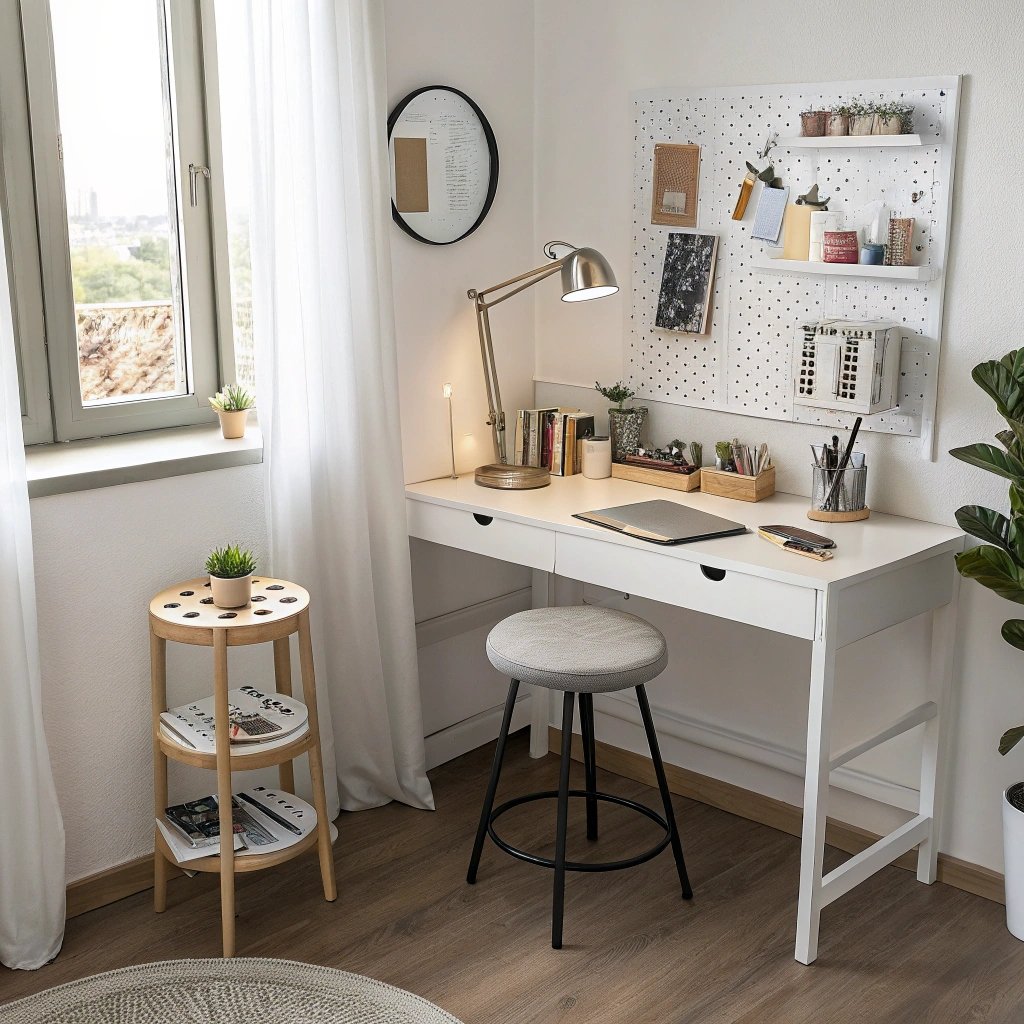
Claim a corner for a compact desk-vanity hybrid. A 90-degree surface with a shallow drawer handles laptop sessions by day and makeup or grooming by night.
Add a mirror hinged on the wall and a small task lamp with warm, high-CRI light so colors read true.
What makes something unique:
Mount a pegboard or slim organizer rail on the return wall to hang headphones, brushes, or charging cables.
A backless stool slides entirely under the surface when not in use. This tiny command center keeps work and self-care out of the bed zone without demanding a second room.
13) Curtain Partition for Studio Bedrooms
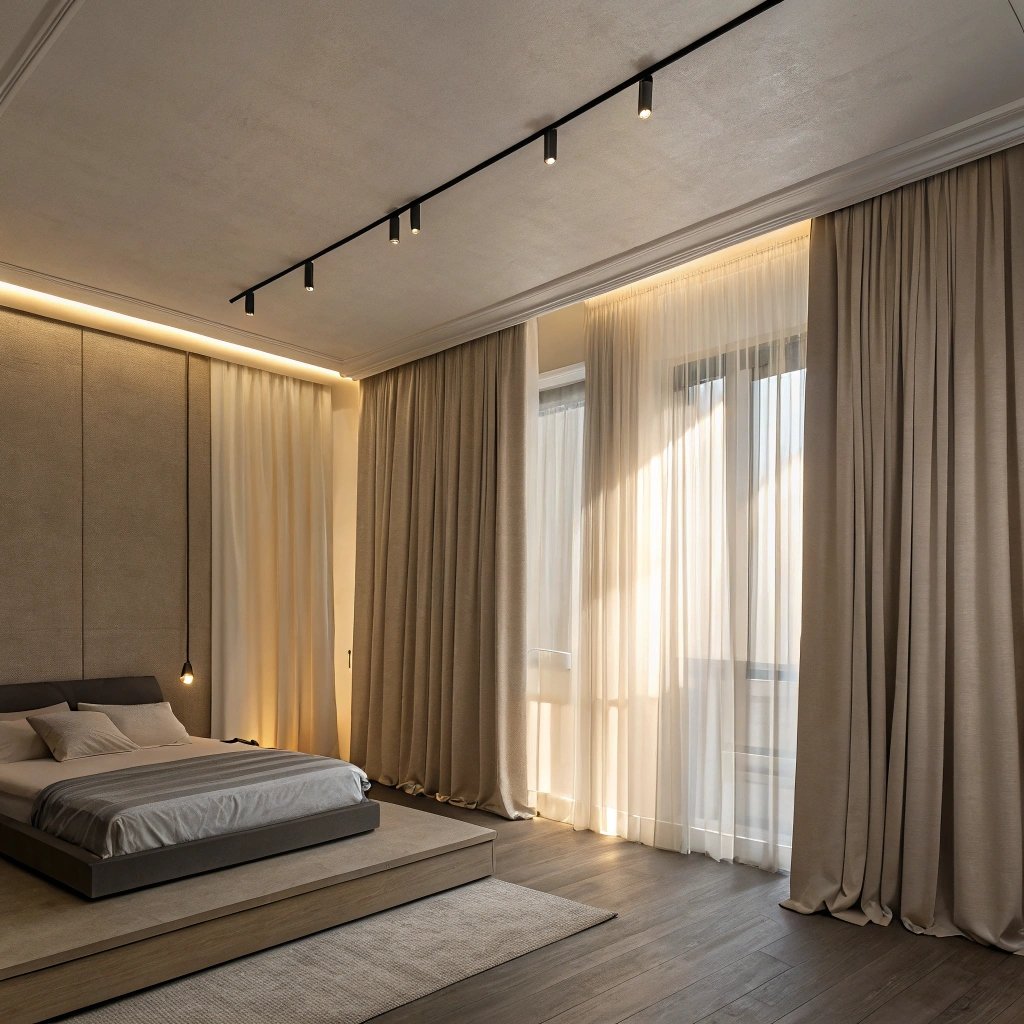
In a studio or shared room, use a ceiling-mounted track and heavy linen to create a soft partition. The curtain closes at night for privacy and opens by day to restore full width.
Choose a tone that matches your walls so the partition reads intentional, not temporary.
What makes something unique:
Layer a sheer behind the heavier panel for flexible light control and a hotel feel. Add a floor guide or discreet magnet at the edge to keep panels from drifting.
The partition turns one space into two moods, improving sleep quality and making small living feel composed and adult.
14) Elevated Lighting Plan
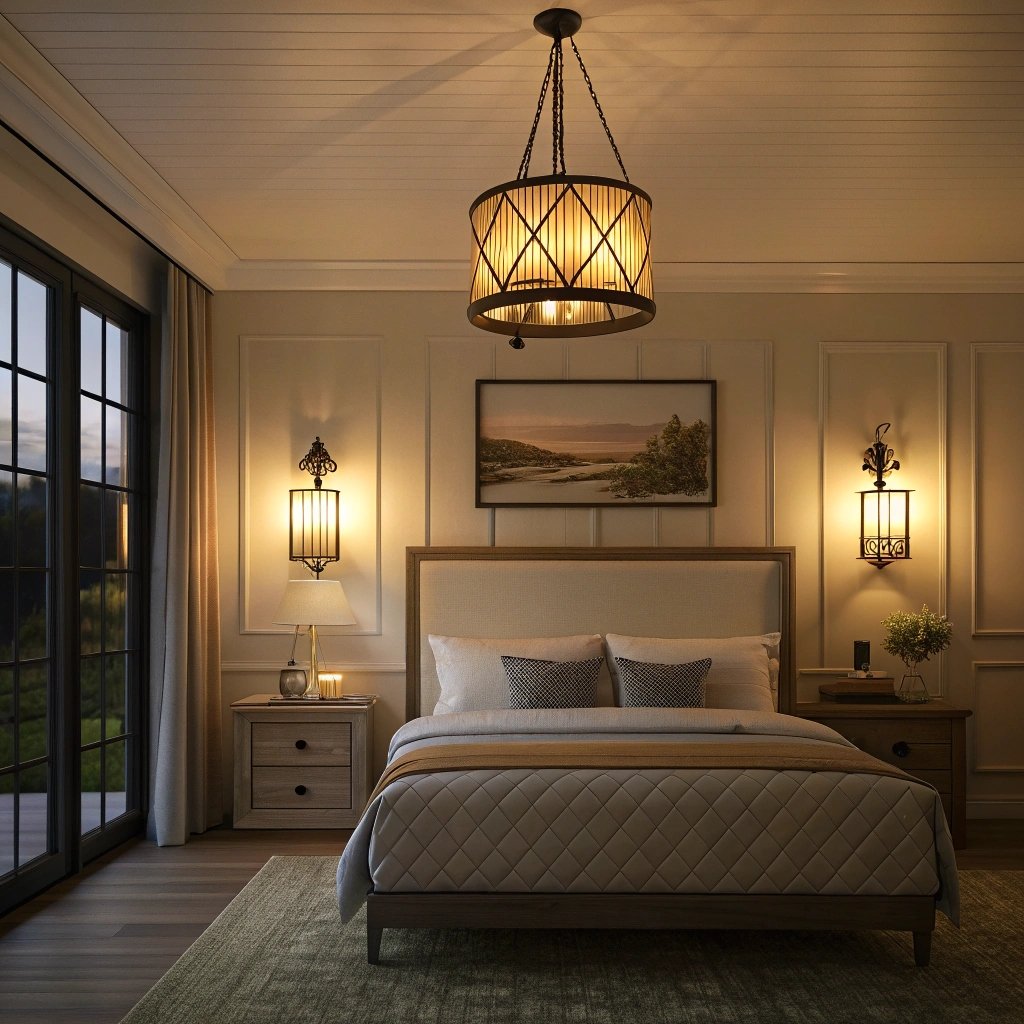
Think like a living room: one ambient fixture, bedside task lighting, and a hidden accent such as a headboard backlight or toe-kick under a floating nightstand.
Warm 2700–3000K bulbs flatter skin and materials while dimmers let you shift from focused to restful without moving furniture.
What makes something unique:
Hide LED tape behind a narrow shelf to graze a textured wall, visually lifting the ceiling. Add a motion sensor for low-level night paths so you never stub your toe.
Light becomes decor—making every surface look richer and the room feel intentionally designed, not merely small.
15) Pattern with Discipline
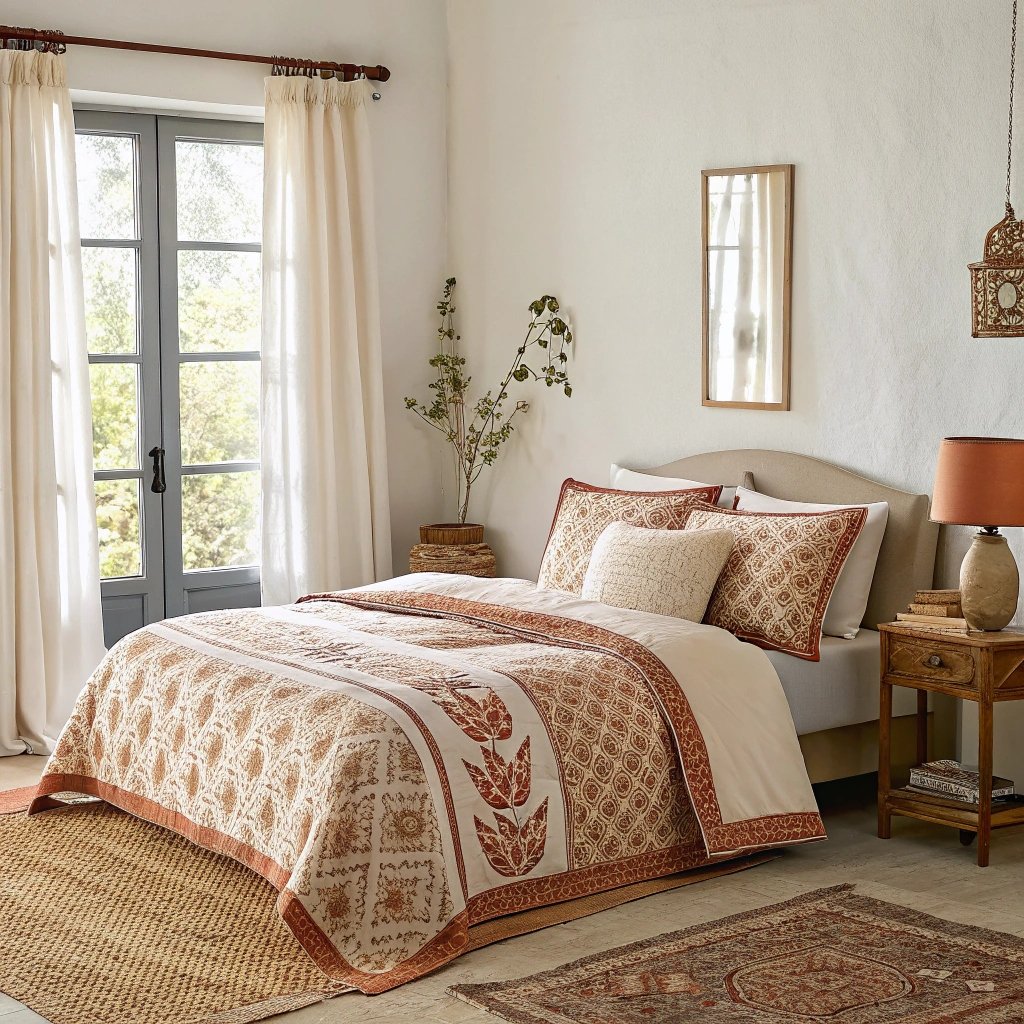
If you love pattern, keep it controlled: one statement moment on the headboard or quilt, and supporting solids everywhere else.
Choose tight, small-scale prints that read as texture from a distance. Repeat a color thread—e.g., soft terracotta—across pillow piping and a ceramic lamp base for cohesion.
What makes something unique:
Use generous white or cream space around the pattern—solid drapery, pale walls, plain sheets—so the room doesn’t shrink visually.
Limit your palette to three tones max. The discipline keeps personality intact while preserving the airy feel small rooms need to avoid feeling crowded or busy.
Quick Tips to Maximize Bedroom Ideas for Small Rooms
Pick one hero move (vertical storage, floating pieces, or a color block wall) and back it up with two subtle tweaks.
Standardize finishes—hangers, hardware, and bins—in a single metal or color for visual calm.
Edit quarterly; small spaces stay serene when every item has a job and a home.

